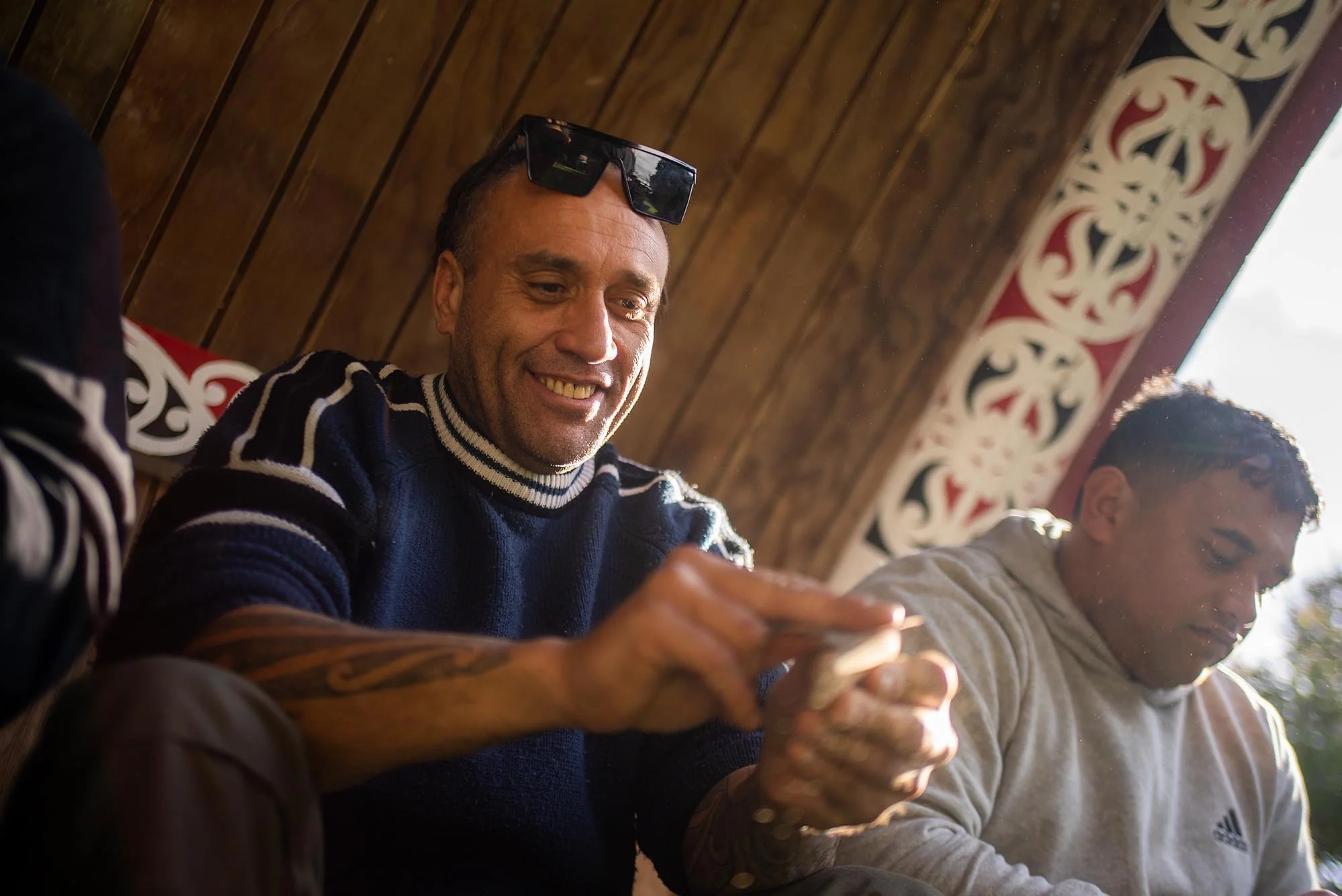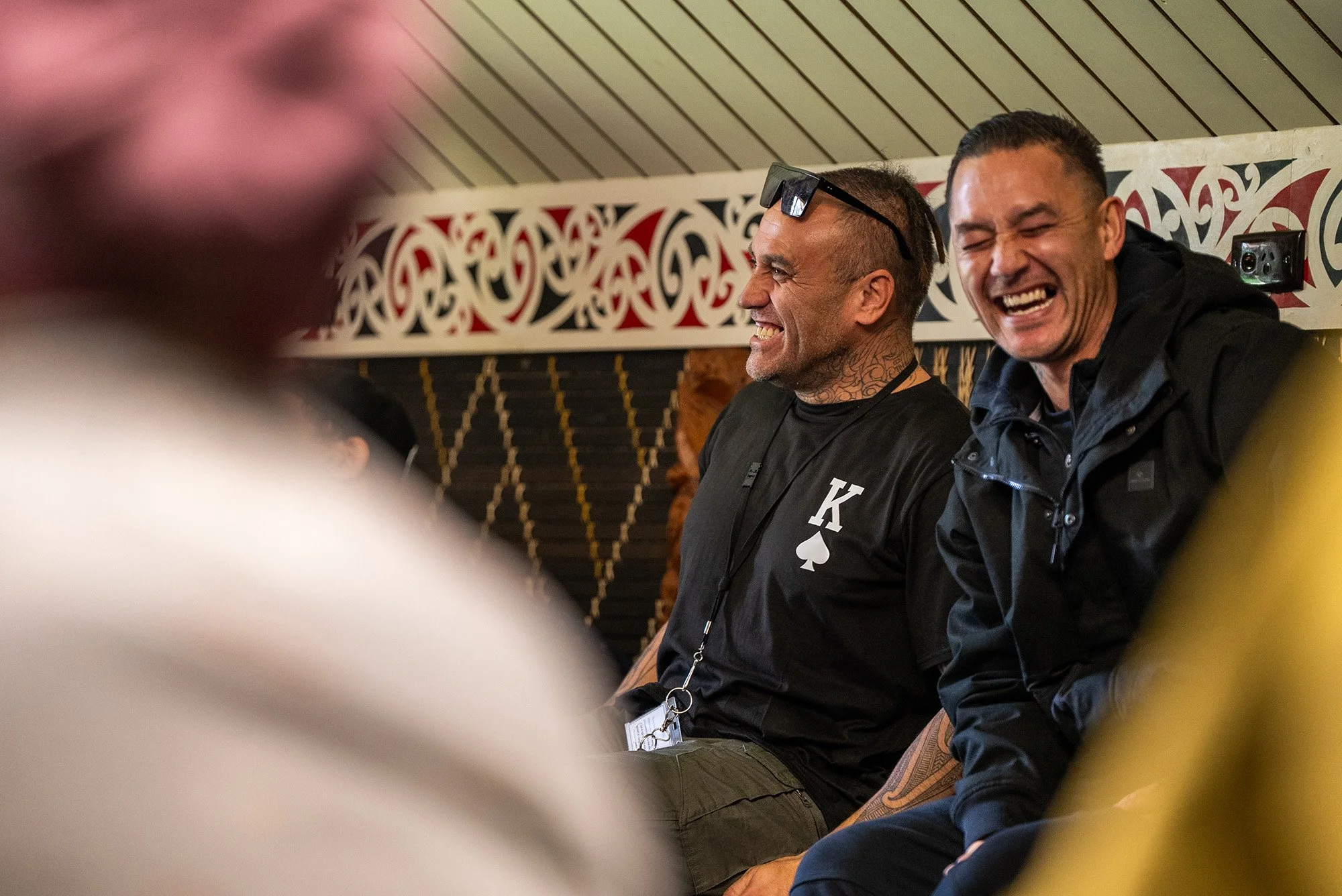Story of Hope: The Power of Holistic Wellbeing
The whakataukī “Hokia ki ō maunga kia purea koe e ngā hau o Tawhirimātea”, ‘Return to your mountains to be cleansed by the winds of Tawhirimātea’ reminds us of the power of whakapapa, belonging, identity, self-worth, and security. Mātauranga Māori holds deep treasures, and when we take the time to truly engage with it, we uncover pathways towards hope and transformation. For Rupene Omahuru, this kōrero carries an even greater meaning. His journey of exploring these taonga has opened the door to healing, hope, and a transformed future.
Rupene, one of many, participated in an initiative called Rūnāia which means, ‘the coming together to work on our wellbeing.’ It is about reconnecting tangata whaiora and their whānau to their ukaipō, their whakapapa, and their own pathways to wellness. This initiative is grounded in Te Ao Māori models of care, delivered through the lens of Te Whare Tapawhā and mātauranga Māori. It is a marae and taiao based wānanga focusing on learning and connecting with pūrākau (stories), mahi toi (art), kapa haka, taonga pūoro (traditional Māori musical instruments), raranga (weaving) and more, creating safe spaces where whānau feel held, valued, and inspired to carry their kete of wellbeing forward.
This initiative is led through partnership with He Puna Ora and Korowaitia Te Puna Waiora, Te Oranganui.
“I’ve spent my adulthood in Australia, being involved in the gangs, criminal activity, I’ve abused myself with substances, in and out of jail, ended up getting myself deported, I lost my kids 15 years ago to the system, I was suicidal suffering psychosis in and out of mental wards, I’ve tried many times to help myself. The mainstream system never worked for me.”
One of the priorities within the Collaborative Design of Mental Health & Addictions Service Delivery Report was a need to incorporate the clinical model into a holistic model of care. Practitioners wanted to see a more holistic model of care, but could not articulate what this truly means. The Mental Health and Addiction sector continues to lean on a clinical model of care that views mental disorder as disease, often overlooking the importance of whānau and wider wellbeing. By integrating the clinical model into a holistic approach, grounded in Te Ao Māori perspectives, we can expand care to include whānau engagement, peer support, cultural security, and earlier interventions. A holistic model recognises the fluid nature of mental wellbeing and prioritises closer-to-home, community-based services that build trust, reduce stigma, and offer the right support when needed. Every front door as a wellbeing experience.
Rupene’s story is an example of how holistic services can address unmet needs, and create space for tangata whaiora to heal beyond what they imagined possible. Through Rūnāia, he found a different path.
“Since being back I have reconnected with my marae, my maunga, I’ve learnt more about my whakapapa, who I am and where I come from, it gives me the strength to know where I am going to go and that I can do it.”
Rūnāia shows that when services, both mainstream and iwi-led, build genuine relationships, they can become the connectors that open new pathways. These connections help whānau rediscover themselves, strengthen their bonds with each other, and step into spaces that uphold their mana.
Rupene’s journey didn’t end there. Today, he works as a Peer Support Worker Kaitūruki for Korowaitia Te Puna Waiora, Te Oranganui who provide a Kaupapa Māori Service for tangata whaiora and whānau who would like support when experiencing problems with mental health and/or substance abuse. He supports whaiora to develop skills and knowledge that allow them to be more resilient, working towards wellness. His lived experience is now his greatest strength, allowing him to connect authentically with whānau and show them that transformation is possible.
“Life is amazing since Rūnāia, I have a great sense of belonging. Rūnāia helped me find myself and to also have more self-awareness. I am also reconnected with my whānau, especially my children.”
“It's been 17 years since I have seen my kids, and in the last 4 years I have been reconnected back to them and I now live with them.”
“It's like I have had this massive 17 year gap of trauma and pain, to healing, happiness and closure.”
His story is proof that kaupapa Māori approaches like Rūnāia don’t just change lives, they create leaders. By elevating lived experience and restoring identity, the initiative builds capacity within whānau and the wider community.





